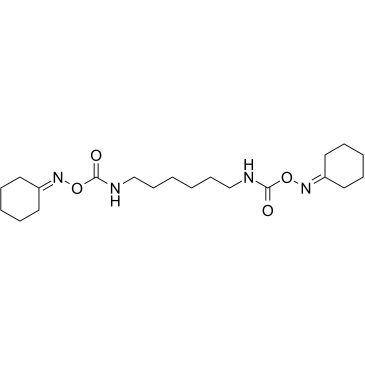Characterization of the lipolytic pathways that mediate free fatty acid release during Fas/CD95-induced apoptosis.
M Iturralde, J Pardo, E Lacasa, G Barrio, M A Alava, A Piñeiro, J Naval, A Anel
Index: Apoptosis 10(6) , 1369-81, (2005)
Full Text: HTML
Abstract
We have undertaken a study to characterize the lipolytic pathway responsible for the generation of free fatty acids (FFA) during Fas/CD95-induced apoptosis in Jurkat cells. It was initially shown that the cellular lipid fraction that suffered the major quantitative decrease during Fas-induced apoptosis was that of phosphatidylcholine (PC). In addition, the secretion of palmitic acid-derived FFA was largely prevented by D609, an inhibitor of PC-specific phospholipase C (PC-PLC) and also by the diacylglycerol lipase (DAGL) inhibitor RHC-80267, suggesting that the secretion of these FFA during Fas-induced apoptosis is mediated by the generation of DAG by a PC-PLC activity and, sequentially, by a 1-DAGL activity which generates the FFA from its sn-1 position. The endocannabinoid 2-arachidonoyl glycerol (2-AG) should be generated as a sub-product of this pathway, but it did not accumulate inside the cells nor was secreted into the supernatant. Interestingly, the complete inhibition of free AA secretion during Fas-induced apoptosis was only achieved by using the AA trifluoromethylketone, which not only inhibits all types of phospholipase-A(2) (PLA(2)) activities, but also the described lytic activities on 2-AG. Using a combination of RHC-80267 and the iPLA(2)-specific inhibitor bromoenol lactone, it was shown that the DAGL pathway also cooperates with iPLA(2) in the generation of free arachidonate.
Related Compounds
| Structure | Name/CAS No. | Molecular Formula | Articles |
|---|---|---|---|
 |
RHC-80267
CAS:83654-05-1 |
C20H34N4O4 |
|
Capsazepine, a vanilloid antagonist, abolishes tonic respons...
2005-03-01 [Am. J. Physiol. Lung Cell. Mol. Physiol. 288(3) , L460-70, (2005)] |
|
L- and N-current but not M-current inhibition by M1 muscarin...
2008-07-01 [J. Cell Physiol. 216(1) , 91-100, (2008)] |
|
Brain phospholipase C-diacylglycerol lipase pathway is invol...
2004-09-19 [Eur. J. Pharmacol. 499(1-2) , 99-105, (2004)] |
|
Antimicrobial activity of clofazimine is not dependent on my...
2004-06-01 [J. Antimicrob. Chemother. 53(6) , 971-4, (2004)] |
|
Bidirectional roles of the brain 2-arachidonoyl-sn-glycerol ...
2008-03-17 [Eur. J. Pharmacol. 582(1-3) , 62-9, (2008)] |